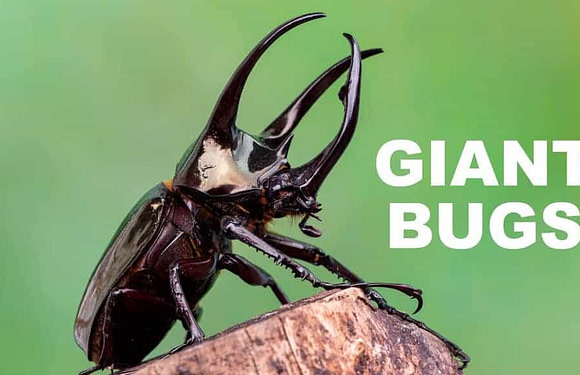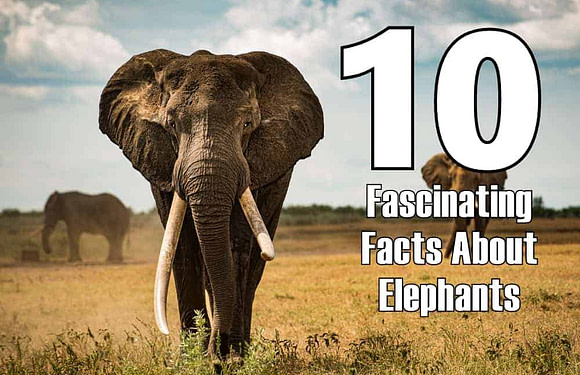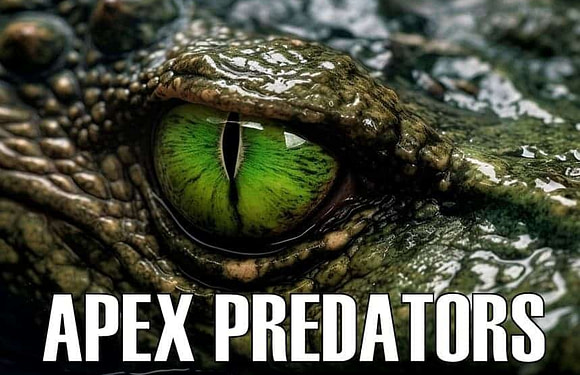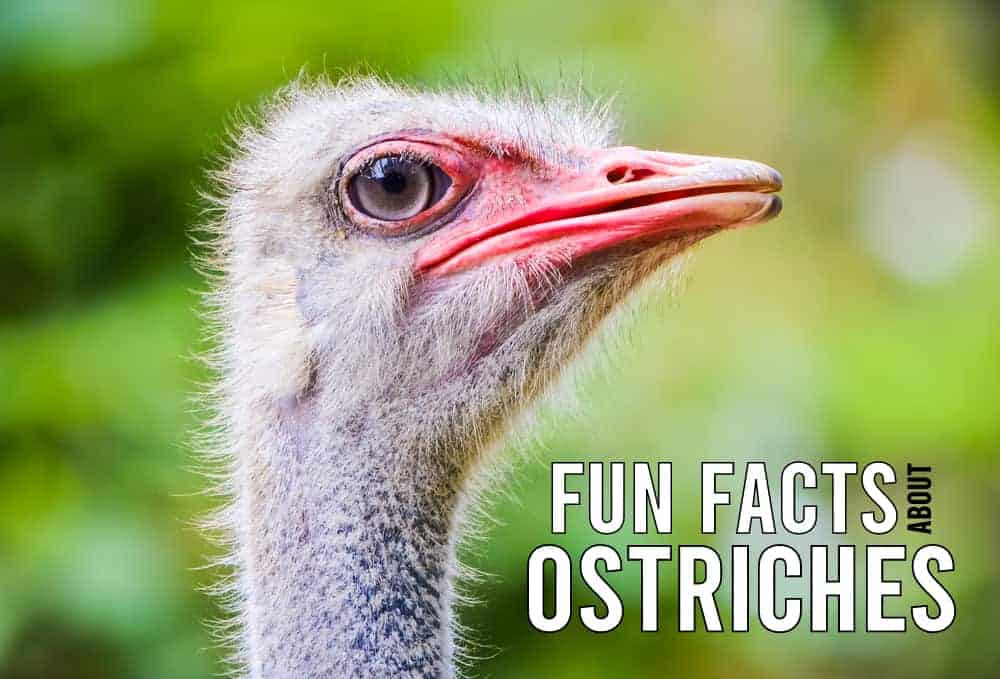
The ostrich is one of the most unique and intriguing birds on the planet. With their tall stature, size and speed, these flightless birds certainly stand out on the African savannah.
Let’s explore the top 10 fun facts about the adorable ostrich.
1. There are 2 Species of Ostrich
The ostrich family, while often viewed as a homogenous group, actually comprises two distinct species, each with its own characteristics and habitat preferences.
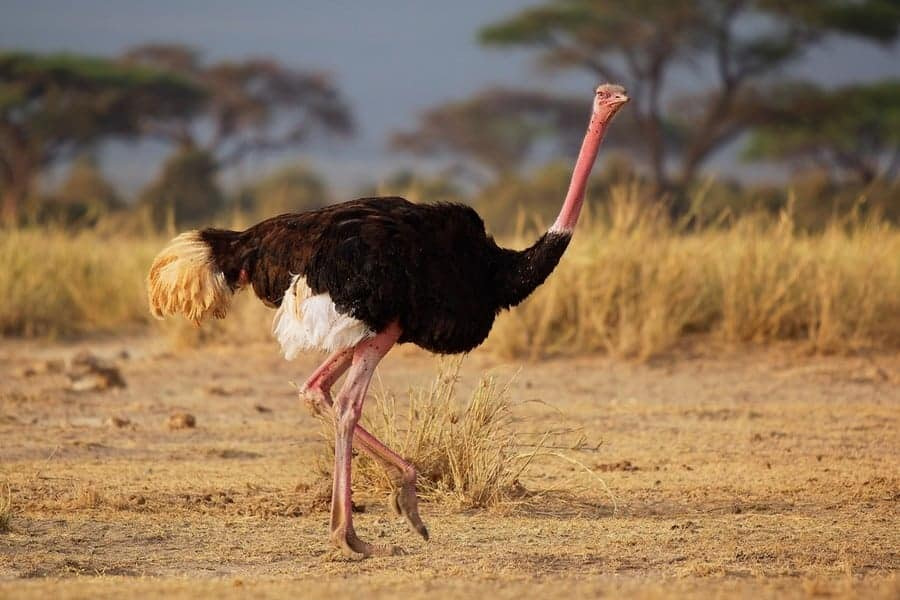
The Common Ostrich, primarily found in sub-Saharan Africa, is the more widespread of the two. This species is notable for its black and white plumage, which the males flaunt, and the duller brown of the females. They are predominantly found in the savannahs and woodlands of Africa, including the wildlife parks of Tanzania.
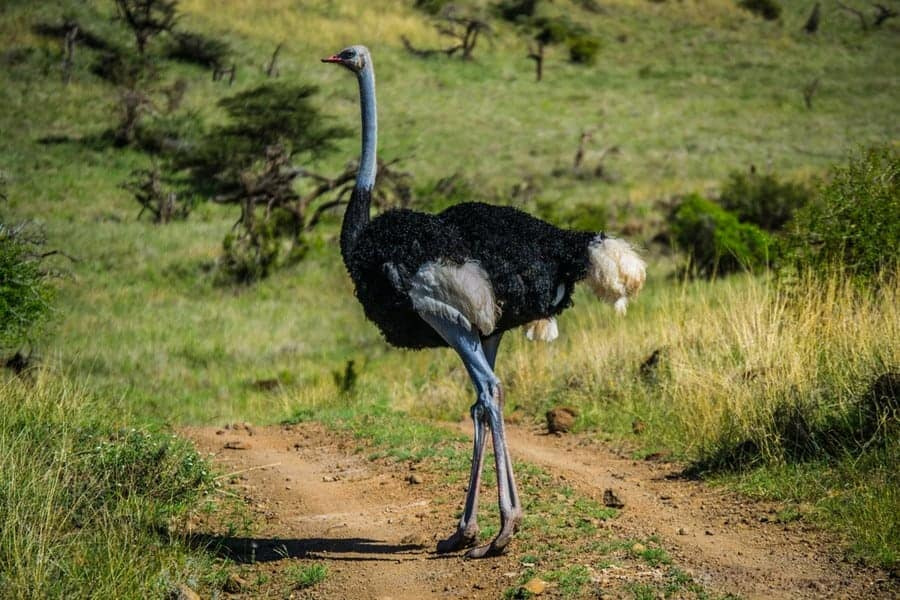
The Somali Ostrich, which inhabits the Horn of Africa, exhibits a slightly different physical appearance. The males are characterized by their blue-grey neck and thighs. The females of this species, while also brown, tend to have a slightly lighter shade.
2. They Are the World’s Largest Bird
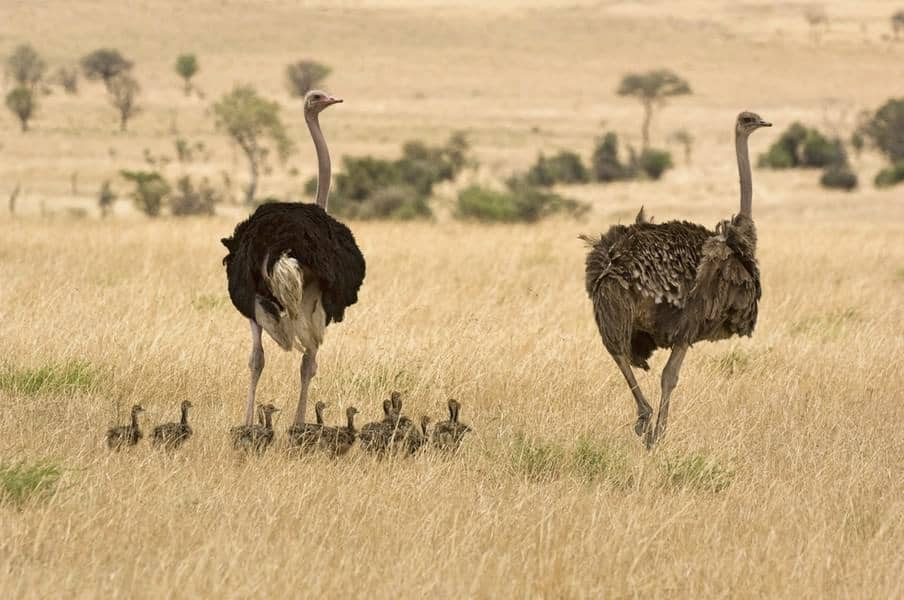
Ostriches are the largest and heaviest birds on Earth. With a height up to 9 feet (2.8 meters) and a weight reaching up to 345 pounds (156 kilograms). The wingspan of an ostrich is about 6.6 feet (2 meters).
The ostrich dwarfs its counterparts. For instance, the Australian Emu is the second largest bird, but it is significantly smaller than the ostrich. An adult emu stands up to 6.2 feet (1.9 meters) tall and weighs up to 121 pounds (55 kilograms).
3. Ostriches Can’t Fly But They Run Really Fast
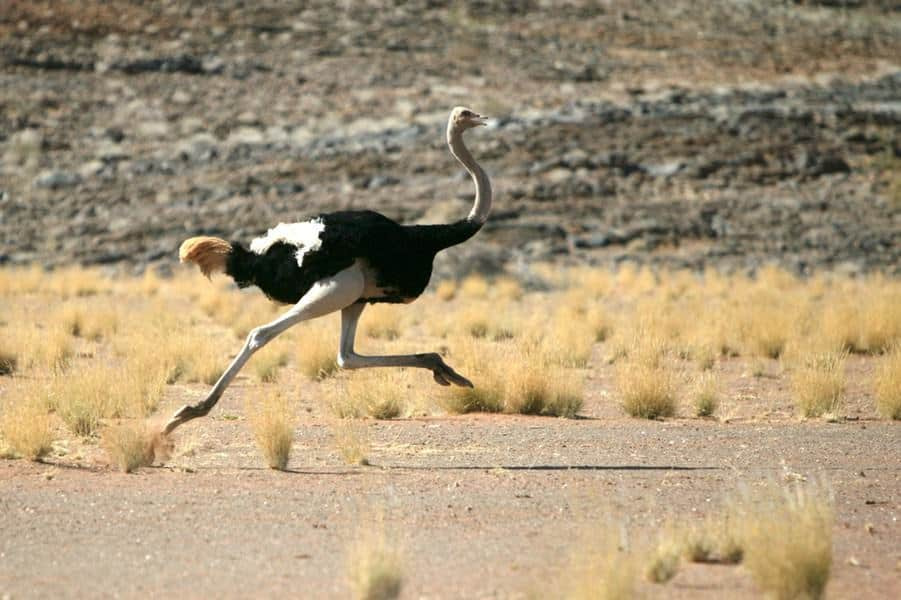
Due to their size and bulk, ostriches aren’t capable of flying. Initially, like all birds, ostriches descended from flying ancestors. However, over millions of years, as these birds adapted to the open savannas and grasslands of Africa, flight became less crucial for survival and more of an energy burden. This led to the reduction in wing size and development of their robust legs. In a single stride, an ostrich can cover a distance of 10-16 feet (3-5 meters). It can reach a maximum speed of 45 mph (72.5 km/hour).
4. They Only Have Two Toes
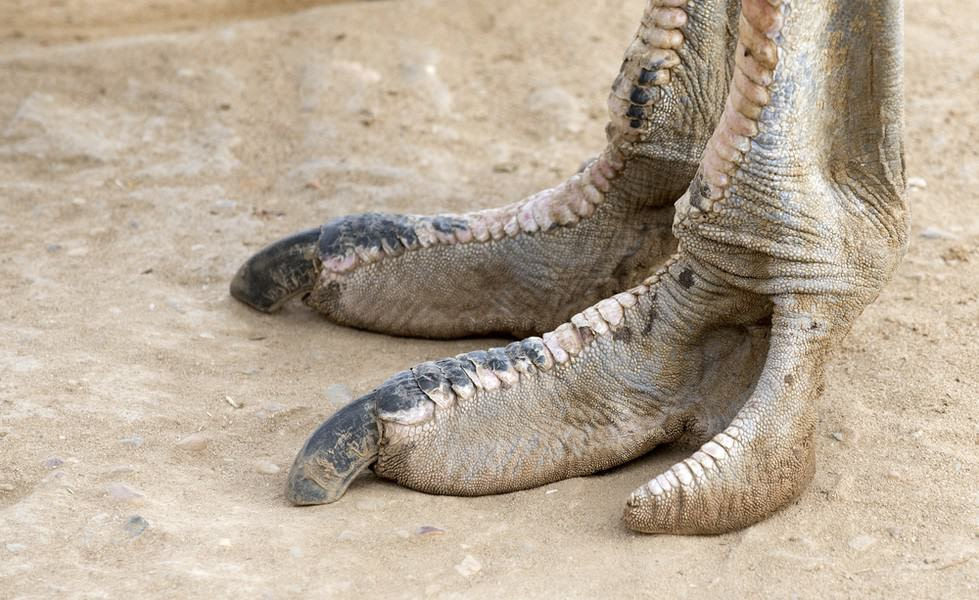
Ostriches are special among birds for having just two toes on each foot, a trait known as didactylism. This feature sets them apart from most other birds, which typically have three or four toes.
The two-toed structure in ostriches is suited for running. Fewer toes mean reduced weight and drag, contributing to quick, streamlined and efficient locomotion. The larger surface area of these toes also aids in agility, stability and grip, all of which are essential for evasion of predators.
The main toe is equipped with a robust nail, akin to a hoof.
4. Ostriches Live in Flocks
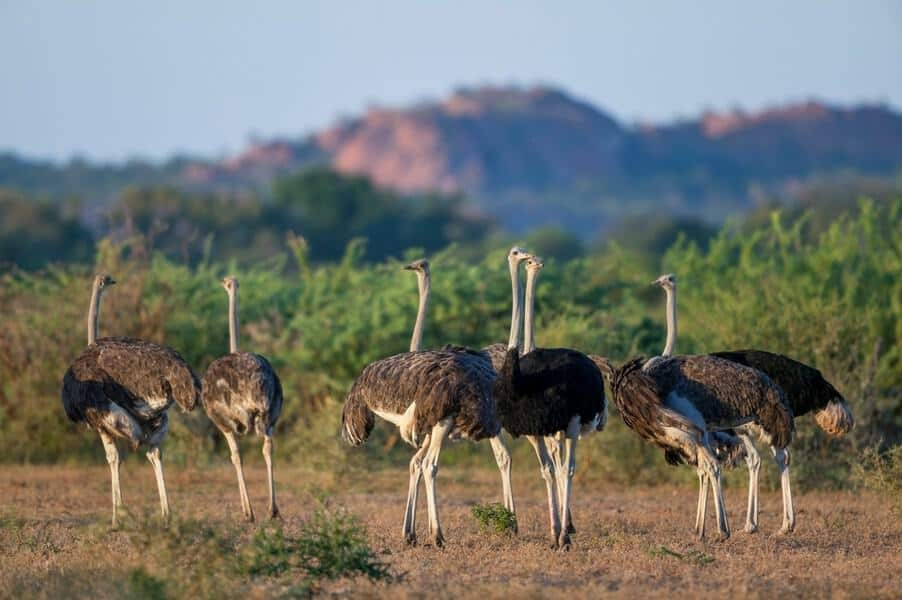
Ostriches are gregarious birds and are often found in groups of about 12 individuals, known as flocks or herds. These social gatherings help ostriches protect themselves from predators and provide opportunities for cooperative foraging.
Typically, these groups are led by a dominant male and a primary female, with several other females forming a hierarchy beneath her. The dominant male and primary female are the primary breeders, while the subordinate females contribute to the communal nest. This nesting strategy increases the survival rates for the offspring.
6. Male Ostriches Dance For Their Ladies
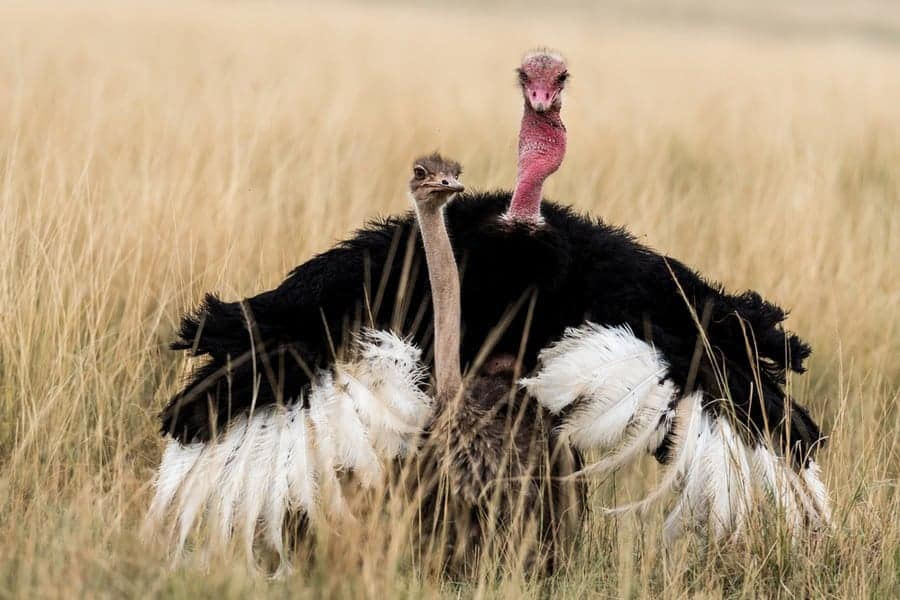
The mating rituals of ostriches involve elaborate dances and behaviors. During the breeding season, the male ostrich performs an intricate dance. He alternates wing flapping and sweeping movements, coupled with dipping and bowing actions. This visual spectacle showcases his strength and vitality to potential mates.
Additionally, the male’s plumage, featuring bold black and white feathers, becomes more vibrant during this period, enhancing his appeal. The female ostrich, in response to these displays, exhibits receptive postures, signaling her interest.
Once a pair bond is formed, the male becomes protective, guarding the female against rivals.
7. Ostriches Have a Specialized Stomach
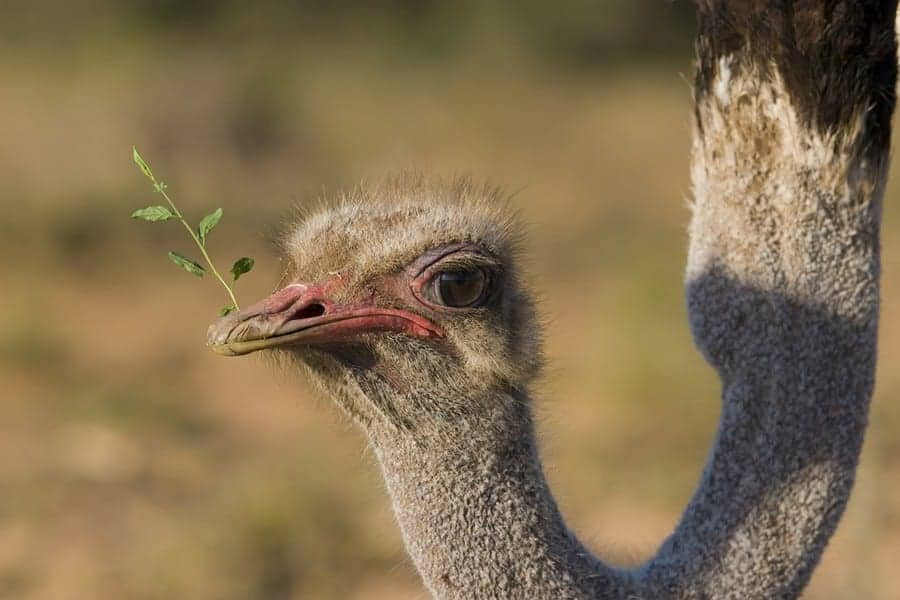
Ostriches are omnivorous and opportunistic feeders, primarily consuming a diet of plants, seeds, insects, and small vertebrates.
Their stomach is divided into two main parts – the glandular stomach (proventriculus) and the gizzard (ventriculus). Initial digestion occurs in the glandular stomach with the secretion of digestive enzymes and acids. It’s comparable to the stomach in mammals. The gizzard is a muscular part of the stomach that grinds the food. Ostriches ingest stones and pebbles, which stay in the gizzard to help break down tough plant material.
8. They Produce the World’s Biggest Eggs

The ostrich egg stands out for its sheer size and scale. It is the largest egg of any living bird. On average, an ostrich egg measures about 6 inches (15 centimeters) in length and 5 inches (13 centimeters) in diameter, and weighs approximately 3 pounds (1.4 kilograms). This is comparable to 24 chicken eggs!
The thickness of an ostrich egg’s shell is also impressive. At about 3 millimeters thick, it is so strong that a human can stand on it without breaking it. Due to their capacity and dudrability, local tribes in Africa repurposed emptied ostrich eggs as containers, often decorating them with carvings or beads.
9. Ostriches Have a Lethal Kick
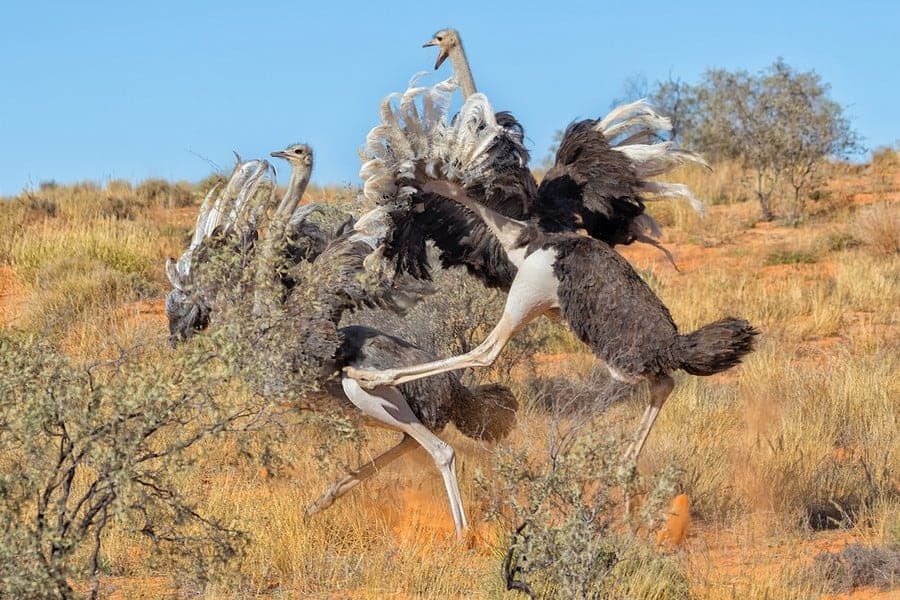
While known for their speed, ostriches are adept at defending themselves by using its powerful legs. They can deliver devastating kicks that can even deter the most fearsome predators. Their blows can generate a force of about 2,000 pounds (141 kilograms) per square inch. When paired with its sharp, 4-inch (10 cm) talons, the ostrich has a mighty weapon capable of injuring or killing lions.
In battles with other ostriches, confrontations often involve aggressive posturing, such as wing flapping and loud hissing, to intimidate opponents. When physical clashes occur, they can be intense, with the birds using their legs and bodies to overpower each other.
10. They Don’t Bury Their Heads in the Sand
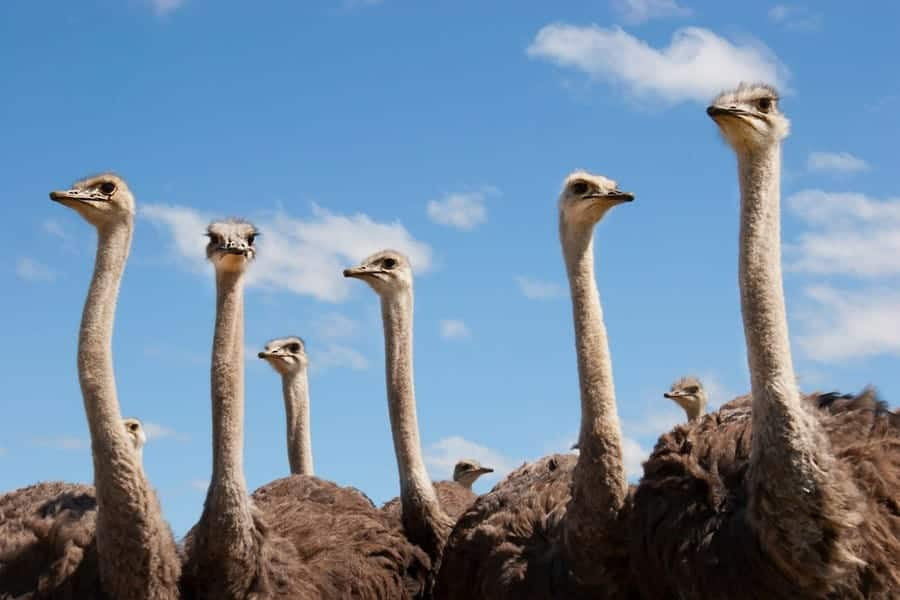
Contrary to popular belief, ostriches do not bury their heads in the sand. The myth states that ostriches bury their heads to make themselves invisible to predators. In other words, if the ostrich can’t see the predators, then the predators can’t see them.
Of course this is rubbish. In reality, ostriches have a interesting defensive posture that might have contributed to this misconception. When threatened and unable to run, they try to camouflage themselves by lying flat on the ground and stretching their necks out. From a distance, this can create the illusion that they have buried their head in the sand.
Ostrich Quick Facts
- Scientific Name: Struthio camelus
- Common Name: Ostrich
- Size: Approximately 6.9–9.2 feet tall
- Weight: 139–320 pounds for females, 220–345 pounds for males
- Lifespan: 40–45 years in the wild
- Diet: Omnivore (primarily herbivorous, occasionally consumes insects)
- Habitat: African savannas, grasslands, and open woodlands
- Conservation Status: Least Concern
Want to see ostriches in their natural habitat? Join us on a Tanzanian Safari.



















































